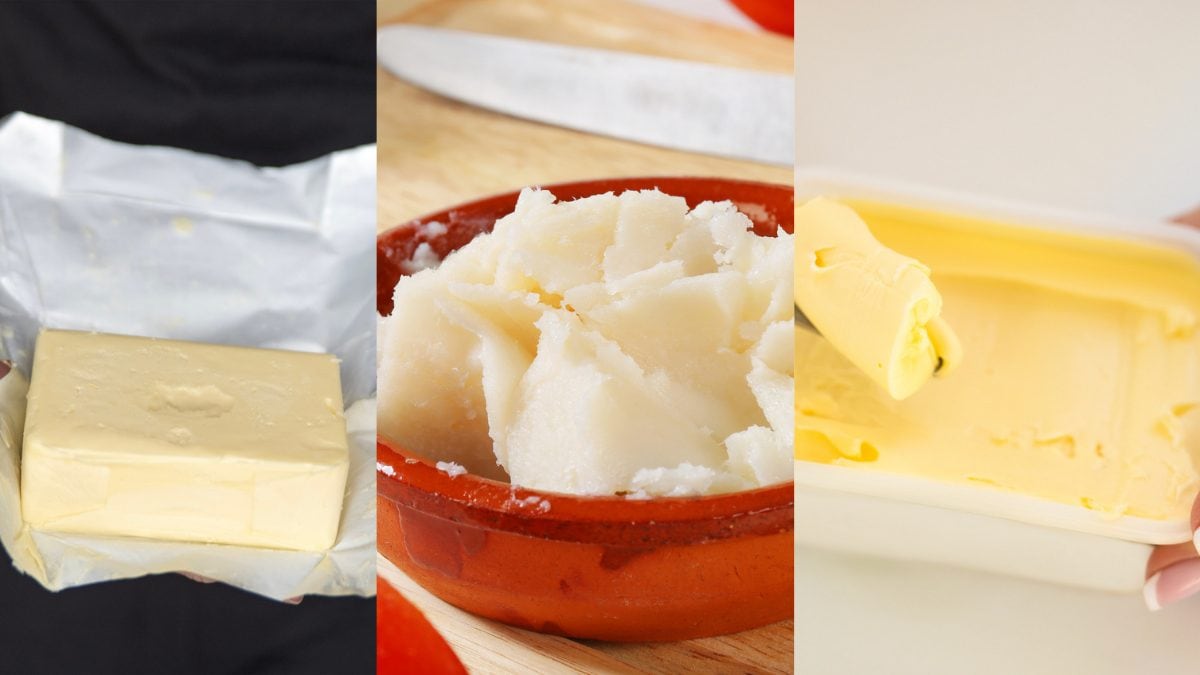
Butter, shortening, or margarine… which is more harmful? We will explain the differences between these three cooking fats and clarify which is best to use and in what quantities. Spoiler: no fat should be demonized, but they should be used in moderation and with awareness. So let's take a closer look at what butter, shortening, and margarine are made of, and how and when to consume them: knowing them and using them in the right quantities helps us make informed choices.
What is Butter?
Butter is an animal fat obtained from cream. It contains approximately 80% fat, and more than half is saturated fat, which should be consumed in moderation. In fact, too much saturated fat increases LDL cholesterol in the blood, the so-called "bad" cholesterol. American guidelines recommend not exceeding 10% of daily calories from saturated fat to avoid possible cardiovascular problems. Butter also contains cholesterol, but we now know that it is not the main culprit in raising blood cholesterol. Therefore, the reasons to limit butter consumption are excessive saturated fat and too many calories.
What is Shortening?
Shortening is made from pork fat, so it's not a vegetarian product like butter. It's almost pure fat, about 99%. Compared to butter, it has more saturated fat, less cholesterol, and zero water. In recipes, it makes products super crumbly. Again, as with butter, nutritionally speaking, it's a product to be limited.
What is Margarine?
And we come to margarine, the most controversial, often used as an alternative to butter in vegan recipes. In fact, it was created as a cheaper substitute at the behest of Napoleon III. Being plant-based, we might think it's also a healthier alternative, but the reality is quite different. It was once produced by hydrogenating oils: a process that created trans fatty acids, which are extremely harmful even in small quantities. If we said earlier that excess saturated fatty acids can cause cardiovascular disease, trans fatty acids are even worse, because they can cause the same damage in small quantities. In fact, their recommended intake is less than 1% of total daily energy intake. They are also naturally present in other food products of animal origin, but in small quantities.
Today, advanced food technologies, combined with the use of quality raw materials, have made it possible to produce margarines with an improved nutritional profile and free of trans fatty acids. They also contain more water and therefore fewer calories. Be careful when replacing butter with margarine in recipes, because if the water content changes, the recipe changes. But margarine should also be limited for the same two reasons: too many saturated fats and too many calories.
Fun fact: not all margarines are vegan, although this is very rare today. We can find margarines made from a mixture of animal and vegetable fats, so pay attention to the label.
Which Should I Use: Butter, Shortening or Margarine?
So, in the end, which one should you use: butter, shortening, or margarine? Whichever you prefer depends on the recipe, but it's important to use these types of fats while keeping in mind that you need to be careful about the dosage and that in a daily diet, it's best to choose a vegetable oil rich in unsaturated fats like extra virgin olive oil. Bottom line: no fat should be demonized; the trick is to understand them, use them in the right quantities, and choose wisely.
;Resize,width=767;)
